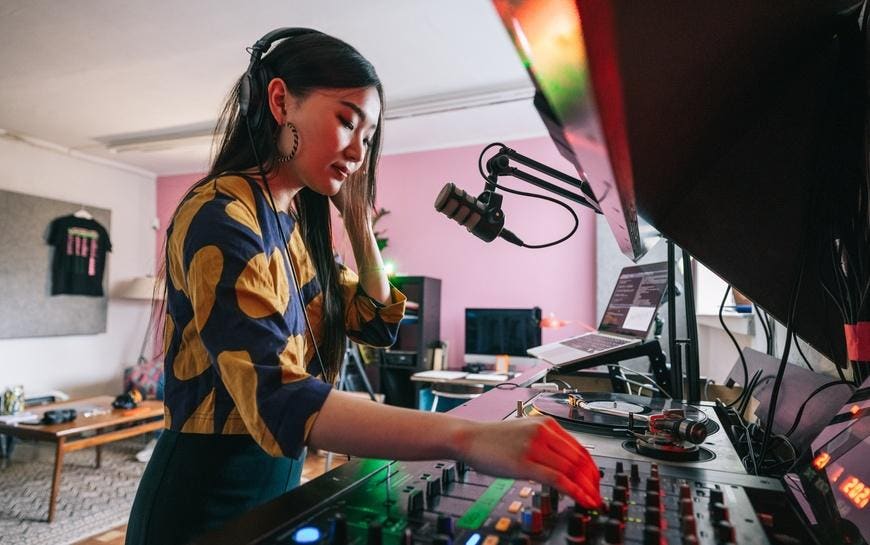Shaun Fabos is the president and COO of Fab Factory Studios.
After Pharrell Williams was commissioned to write “Happy” for the soundtrack of Despicable Me 2, his first nine attempts were rejected. Then, when he got it right, Williams offered the song to Cee Lo Green. “He sounded amazing on it,” Williams told Howard Stern. “I mean, he burns my version!” But part of Cee Lo’s team vetoed plans to release “Happy.” That forced Williams, normally more collaborator than frontman, to be the face and voice of what became a No.1 global hit in 2014. This shows that success—whether in creative or entrepreneurial pursuits—rarely follows a straight line.
Williams is also a bit of a serial entrepreneur—expanding from producer to record label founder and Louis Vuitton menswear creative director—so he is a good role model for staying true to one’s creative roots while building multiple ventures.
Similarly, many creatives and entrepreneurs find themselves evolving beyond their original passion into adjacent roles. In my experience as a studio co-owner, the challenge is accepting that success rarely comes quickly or in expected ways. Often, it can reveal possibilities we had never even considered.
The Reality Check
This non-linear journey is something I’ve experienced firsthand as both a creative and businessman. I had worked very hard to get into the music industry as a mixing engineer when I came to a surprise pivot. As a family, we had started a recording studio, and I initially focused on the creative and technical side of music production. But as the studio grew, my father needed all hands on deck, so I stepped aside from mixing and stepped up to run operations. In all honesty, it was rough in the beginning.
We were building a studio with a different vibe, a focus on the artist experience and attracting up-and-comers in the industry. I have always had an entrepreneurial drive since I was a young kid, but this was something else. In an industry centered on reputation, we didn’t have a rich studio heritage to call on. Breaking through the barrier of being an unknown took a lot longer than we anticipated.
We really thought it would be like Field of Dreams—“build it, and they will come.” In reality, we had to assemble the right team, network through word of mouth and create a buzz. Only now are we really hitting our targets. Today, my creative energy flows into conceptualizing spaces, selecting art and designing experiences. I’m still connected to music through artists and repertoire, but now I am hearing new tracks and talent through a different filter.
This job may not have been what I would have originally chosen, so it has required a shift in mindset. In that, I am in good company.
Lessons Learned
Work in the industry you love.
Sia wrote hits for the likes of Rihanna (“Diamonds”) and Beyoncé (“Pretty Hurts”) before her breakthrough as a mainstream solo artist. Lady Gaga also penned songs for Britney Spears and the Pussycat Dolls before grabbing the limelight for herself. Success looks different for everyone, and Sia’s decision to cover her face in live appearances shows that for her, it’s about the music, not the fame.
Yet, our passion is not always a viable career at the moment. That’s when we have to come to grips with reality. Art is a funny thing because it’s subjective, and culture is always shifting. The stars align when the timing is right—not necessarily the strategy or talent. Lizzo originally released the No.1 hit “Truth Hurts” in 2017 but didn’t get attention until 2019, when its theme of body positivity and self-love found a receptive audience. These kinds of unknowns are partly why I have advised artists who weren’t making their desired impact to try going behind the scenes and writing.
For aspiring entrepreneurs and creatives alike, the lesson here is to work in the industry you love, even if it’s not your dream role yet. I know talented musicians—rock ‘n’ rollers—who work in the movie business mixing audio. It’s called the “spaceship phenomenon,” where they push all the buttons to make the sound right. At least they are in the studio doing something they love—and that’s more than just a consolation.
Persistence is a discipline.
We built our place 10 years ago with a different vision for what a studio could be. Like many creative ventures, it took time to find its audience. Throughout our evolution, the one constant has been discipline. Most people don’t realize that for both creatives and entrepreneurs, success rarely comes from a single “hit.”
Artists might have songs that were released and pulled or never saw the light of day. It takes thousands of attempts to shape a song into something that resonates with a mass audience. The same might be said for any successful product in the marketplace. It requires discipline as much as genius.
My father taught me a lot about persistence. The 10,000-hour rule suggests you are not really a professional until you reach that benchmark. My father embodied this: Watching him build and sell his business, I had persistence drilled into me at a young age. The deeper lesson he taught me, however, was to never give up on a dream, no matter what form it takes and how often it changes shape.
Leaps Of Faith
Many creative entrepreneurs and artists find themselves reimagining their careers, not as a failure but as an evolution. Some people start on one path and end up succeeding on a similar but different one. I originally set out to be a mixing engineer but found myself designing creative spaces and nurturing talent instead. As creatives and entrepreneurs, our job is not just to stay open to where the journey takes us; it’s to recognize when we have arrived somewhere worth being—and maybe even staying there.
Forbes Business Council is the foremost growth and networking organization for business owners and leaders. Do I qualify?
Read the full article here

